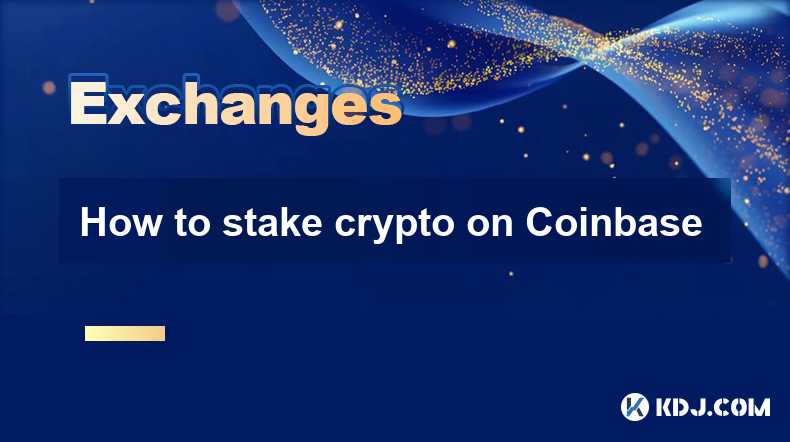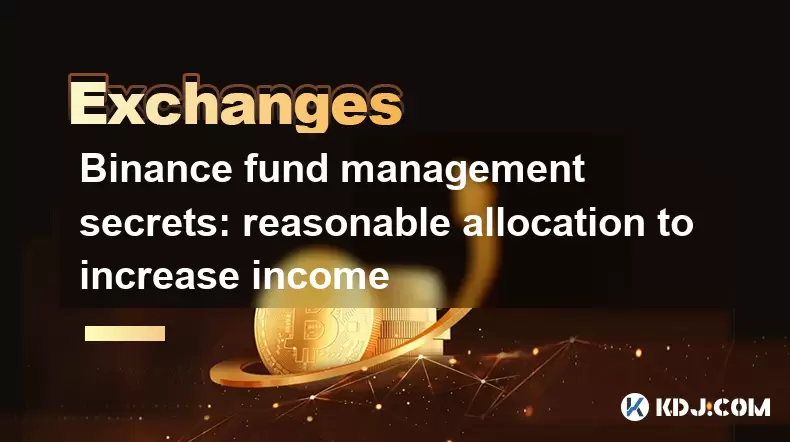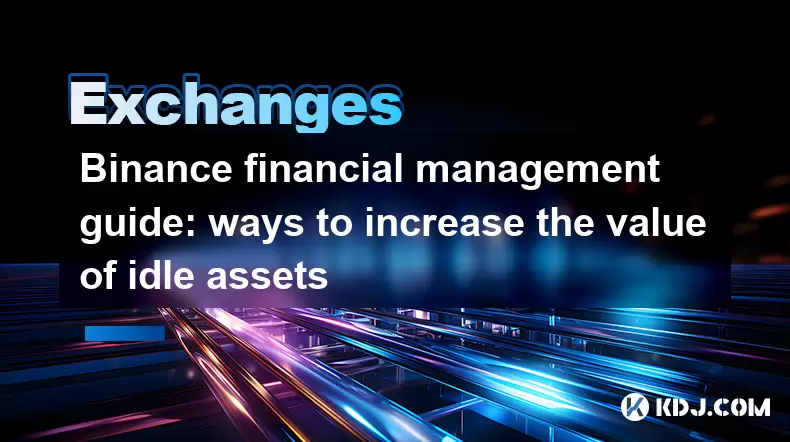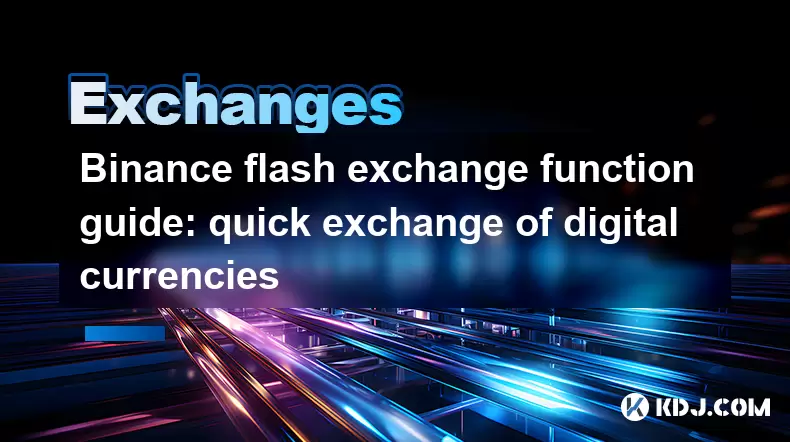-
 Bitcoin
Bitcoin $108,165.4587
0.78% -
 Ethereum
Ethereum $2,456.3517
1.15% -
 Tether USDt
Tether USDt $1.0003
0.00% -
 XRP
XRP $2.1934
0.05% -
 BNB
BNB $650.0935
0.52% -
 Solana
Solana $151.3905
2.69% -
 USDC
USDC $0.9998
0.00% -
 TRON
TRON $0.2751
-0.32% -
 Dogecoin
Dogecoin $0.1640
0.87% -
 Cardano
Cardano $0.5631
0.57% -
 Hyperliquid
Hyperliquid $38.7115
4.69% -
 Bitcoin Cash
Bitcoin Cash $493.1868
-0.39% -
 Sui
Sui $2.8217
3.61% -
 Chainlink
Chainlink $13.3994
2.08% -
 UNUS SED LEO
UNUS SED LEO $9.1632
0.94% -
 Avalanche
Avalanche $18.0318
1.97% -
 Stellar
Stellar $0.2388
0.35% -
 Toncoin
Toncoin $2.8763
1.41% -
 Shiba Inu
Shiba Inu $0.0...01160
1.59% -
 Litecoin
Litecoin $86.6393
1.29% -
 Hedera
Hedera $0.1485
0.16% -
 Monero
Monero $315.7948
1.56% -
 Polkadot
Polkadot $3.4240
1.88% -
 Bitget Token
Bitget Token $4.6314
-0.44% -
 Dai
Dai $0.9998
-0.01% -
 Ethena USDe
Ethena USDe $1.0002
-0.01% -
 Uniswap
Uniswap $7.2110
2.59% -
 Aave
Aave $270.6087
6.07% -
 Pi
Pi $0.5350
0.52% -
 Pepe
Pepe $0.0...09545
1.26%
How to stake crypto on Coinbase
Staking crypto on Coinbase is easy: verify your account, choose a supported cryptocurrency like ETH, ADA, or SOL, and follow simple steps to earn rewards.
Apr 02, 2025 at 07:28 pm

Staking crypto on Coinbase is a straightforward process that allows you to earn rewards on your cryptocurrency holdings. By participating in staking, you help secure the network of the cryptocurrency you're holding, and in return, you receive additional tokens as a reward. Coinbase supports staking for several cryptocurrencies, including Ethereum, Cardano, and Solana, among others. To get started, you'll need to have a Coinbase account and hold the supported cryptocurrency in your Coinbase wallet. The process involves a few simple steps, which we'll outline in detail below.
Preparing to Stake on Coinbase
Before you can start staking on Coinbase, there are a few prerequisites you need to meet. First, ensure you have a verified Coinbase account. You'll need to complete the necessary identity verification steps to comply with regulatory requirements. Next, you should have the cryptocurrency you wish to stake in your Coinbase wallet. Make sure you understand the specific staking requirements for the cryptocurrency you're interested in, as different cryptocurrencies may have different minimum staking amounts or lock-up periods.
Choosing the Right Cryptocurrency to Stake
Coinbase supports staking for a variety of cryptocurrencies, each with its own set of rewards and requirements. Some popular options include:
- Ethereum (ETH): Staking Ethereum on Coinbase allows you to participate in the Ethereum 2.0 network upgrade. The rewards are typically around 4-5% annually, but this can vary.
- Cardano (ADA): Cardano offers staking rewards of around 4-6% annually. Staking ADA on Coinbase is a good way to earn passive income while supporting the Cardano network.
- Solana (SOL): Solana staking on Coinbase can yield around 5-7% annually. Solana is known for its fast transaction speeds and low fees, making it an attractive option for staking.
When choosing which cryptocurrency to stake, consider factors such as the potential rewards, the lock-up period, and the overall stability of the cryptocurrency.
: Step-by-Step Guide
To start staking on Coinbase, follow these steps:
- Log into your Coinbase account: Ensure you are logged into your verified Coinbase account.
- Navigate to the Staking section: Go to the "Earn" or "Staking" section of the Coinbase platform. This can usually be found in the main menu or under the "Assets" tab.
- Select the cryptocurrency you want to stake: Choose the cryptocurrency you wish to stake from the list of supported assets. Click on the "Stake" or "Earn" button next to the cryptocurrency.
- Enter the amount you want to stake: Specify the amount of cryptocurrency you want to stake. Make sure you meet the minimum staking requirements for the chosen cryptocurrency.
- Review and confirm: Review the staking details, including the estimated rewards and any lock-up periods. Once you're satisfied, confirm the staking transaction.
- Wait for the staking process to complete: After confirming, the staking process will begin. Depending on the cryptocurrency, it may take some time for your stake to be activated and for you to start earning rewards.
Understanding Staking Rewards and Lock-Up Periods
Staking rewards on Coinbase are typically paid out in the same cryptocurrency you're staking. The rewards are calculated based on the amount you've staked and the annual percentage yield (APY) of the cryptocurrency. For example, if you stake 100 ETH with an APY of 5%, you can expect to earn around 5 ETH in rewards over the course of a year.
It's important to be aware of any lock-up periods associated with staking. Some cryptocurrencies require you to lock up your staked tokens for a certain period, during which you cannot withdraw them. For instance, Ethereum 2.0 has a lock-up period that can last several months or even years. Make sure you understand these terms before committing to staking.
Managing Your Staked Assets
Once you've staked your cryptocurrency on Coinbase, you can manage your staked assets through the Coinbase platform. You'll be able to view your staking rewards, track the performance of your staked assets, and, if applicable, withdraw your staked tokens once the lock-up period has ended.
To manage your staked assets:
- Go to the "Earn" or "Staking" section: Navigate to the section where you initially staked your cryptocurrency.
- View your staking rewards: You'll see a summary of your staked assets and the rewards you've earned so far.
- Withdraw your staked assets: If the lock-up period has ended, you can choose to withdraw your staked tokens. Click on the "Withdraw" or "Unstake" button to initiate the withdrawal process.
Risks and Considerations of Staking on Coinbase
While staking on Coinbase can be a lucrative way to earn passive income, it's important to be aware of the potential risks and considerations. Here are a few key points to keep in mind:
- Market volatility: The value of your staked cryptocurrency can fluctuate, which may affect the overall value of your investment.
- Lock-up periods: Some cryptocurrencies have lock-up periods that prevent you from accessing your staked tokens for a certain time. This can be a risk if you need to access your funds quickly.
- Slashing penalties: In some blockchain networks, validators can be penalized for not performing their duties correctly. While Coinbase handles the technical aspects of staking, there's still a risk of penalties that could affect your rewards.
- Platform risk: As with any centralized platform, there's a risk associated with using Coinbase. Make sure you trust the platform and understand its security measures.
Maximizing Your Staking Rewards
To maximize your staking rewards on Coinbase, consider the following strategies:
- Diversify your staked assets: Staking multiple cryptocurrencies can help spread your risk and potentially increase your overall rewards.
- Stay informed about APY changes: The annual percentage yield for staking can change over time. Keep an eye on these changes and adjust your staking strategy accordingly.
- Reinvest your rewards: Consider reinvesting your staking rewards to compound your earnings over time. This can significantly increase your overall returns.
- Monitor your staked assets: Regularly check the performance of your staked assets and make adjustments as needed. If a cryptocurrency's APY drops significantly, you might want to consider switching to a different asset.
Common Questions About Staking Crypto on Coinbase
Q: What cryptocurrencies can I stake on Coinbase?
A: Coinbase supports staking for several cryptocurrencies, including Ethereum (ETH), Cardano (ADA), Solana (SOL), and others. The list of supported assets may change over time, so it's a good idea to check the Coinbase platform for the most up-to-date information.
Q: How often are staking rewards paid out on Coinbase?
A: Staking rewards on Coinbase are typically paid out on a regular basis, which can vary depending on the cryptocurrency. For example, Ethereum staking rewards are usually distributed daily, while Cardano rewards might be paid out weekly. Check the specific details for each cryptocurrency on the Coinbase platform.
Q: Can I unstake my cryptocurrency at any time?
A: It depends on the cryptocurrency and its lock-up period. Some cryptocurrencies allow you to unstake at any time, while others require you to wait until the lock-up period has ended. Always review the staking terms before committing to staking.
Q: Are there any fees associated with staking on Coinbase?
A: Coinbase may charge a fee for staking certain cryptocurrencies. These fees are typically a percentage of your staking rewards. Make sure to review the fee structure for each cryptocurrency before staking.
Q: Is staking on Coinbase safe?
A: Staking on Coinbase is generally considered safe, as Coinbase handles the technical aspects of staking and has robust security measures in place. However, there are still risks associated with market volatility, lock-up periods, and potential slashing penalties. Always do your own research and understand the risks before staking.
Q: How do I calculate my potential staking rewards on Coinbase?
A: To calculate your potential staking rewards, you'll need to know the amount of cryptocurrency you're staking and the annual percentage yield (APY) for that cryptocurrency. Multiply your staked amount by the APY to get an estimate of your annual rewards. Keep in mind that the actual rewards may vary based on network performance and other factors.
Disclaimer:info@kdj.com
The information provided is not trading advice. kdj.com does not assume any responsibility for any investments made based on the information provided in this article. Cryptocurrencies are highly volatile and it is highly recommended that you invest with caution after thorough research!
If you believe that the content used on this website infringes your copyright, please contact us immediately (info@kdj.com) and we will delete it promptly.
- Bitcoin: A Lifeline Against Authoritarian Regimes and a Strategic Asset?
- 2025-06-29 22:30:12
- Elementary, My Dear Collector: Sherlock Holmes 50p Coins on eBay!
- 2025-06-29 22:30:12
- New Coin Disappearing Fast: The Price Impact of Angry Pepe Fork
- 2025-06-29 22:35:12
- Tron vs. Dogecoin: A Cryptocurrency Showdown in 2025
- 2025-06-29 22:50:12
- Ethereum, DeFi, and Cryptocurrency: Navigating the Evolving Landscape
- 2025-06-29 23:07:14
- Bitcoin Acquisition Strategy: From Saylor's Playbook to London's Crypto Craze
- 2025-06-29 23:30:12
Related knowledge

Binance spot market analysis: seize the best time to buy and sell
Jun 19,2025 at 04:56pm
Understanding the Binance Spot MarketThe Binance spot market is one of the most popular platforms for cryptocurrency trading globally. It allows users to trade digital assets at current market prices, making it essential for traders aiming to buy low and sell high. Unlike futures or margin trading, spot trading involves direct ownership of the asset aft...

Binance fund management secrets: reasonable allocation to increase income
Jun 22,2025 at 02:29pm
Understanding Binance Fund ManagementBinance fund management involves strategic allocation of your cryptocurrency assets to optimize returns while managing risk. The key to successful fund management lies in understanding how different investment options on the Binance platform can be utilized to create a diversified portfolio. This includes spot tradin...

Binance trading pair selection skills: find the best buying and selling combination
Jun 23,2025 at 02:49am
Understanding the Basics of Trading Pairs on BinanceBefore diving into trading pair selection skills, it's essential to understand what a trading pair is. On Binance, a trading pair refers to two cryptocurrencies that can be traded against each other. For example, BTC/USDT means Bitcoin is being traded against Tether. Each trading pair has its own liqui...

Binance new coin mining strategy: participate in Launchpool to earn income
Jun 23,2025 at 11:56am
What is Binance Launchpool and how does it work?Binance Launchpool is a feature introduced by the world’s largest cryptocurrency exchange, Binance, to allow users to earn new tokens through staking. This platform enables users to stake their existing cryptocurrencies (such as BNB, BUSD, or other supported assets) in exchange for newly launched tokens. T...

Binance financial management guide: ways to increase the value of idle assets
Jun 19,2025 at 11:22pm
Understanding Idle Assets in the Cryptocurrency SpaceIn the fast-paced world of cryptocurrency, idle assets refer to digital currencies that are not actively being used for trading, staking, or yield farming. Holding these funds in a wallet without utilizing them means missing out on potential growth opportunities. Binance, as one of the leading platfor...

Binance flash exchange function guide: quick exchange of digital currencies
Jun 23,2025 at 12:29pm
What is the Binance Flash Exchange Function?The Binance Flash Exchange function is a powerful tool designed to allow users to instantly swap between supported cryptocurrencies without the need for placing traditional buy/sell orders. This feature simplifies the trading process by offering a direct exchange mechanism, eliminating the requirement to conve...

Binance spot market analysis: seize the best time to buy and sell
Jun 19,2025 at 04:56pm
Understanding the Binance Spot MarketThe Binance spot market is one of the most popular platforms for cryptocurrency trading globally. It allows users to trade digital assets at current market prices, making it essential for traders aiming to buy low and sell high. Unlike futures or margin trading, spot trading involves direct ownership of the asset aft...

Binance fund management secrets: reasonable allocation to increase income
Jun 22,2025 at 02:29pm
Understanding Binance Fund ManagementBinance fund management involves strategic allocation of your cryptocurrency assets to optimize returns while managing risk. The key to successful fund management lies in understanding how different investment options on the Binance platform can be utilized to create a diversified portfolio. This includes spot tradin...

Binance trading pair selection skills: find the best buying and selling combination
Jun 23,2025 at 02:49am
Understanding the Basics of Trading Pairs on BinanceBefore diving into trading pair selection skills, it's essential to understand what a trading pair is. On Binance, a trading pair refers to two cryptocurrencies that can be traded against each other. For example, BTC/USDT means Bitcoin is being traded against Tether. Each trading pair has its own liqui...

Binance new coin mining strategy: participate in Launchpool to earn income
Jun 23,2025 at 11:56am
What is Binance Launchpool and how does it work?Binance Launchpool is a feature introduced by the world’s largest cryptocurrency exchange, Binance, to allow users to earn new tokens through staking. This platform enables users to stake their existing cryptocurrencies (such as BNB, BUSD, or other supported assets) in exchange for newly launched tokens. T...

Binance financial management guide: ways to increase the value of idle assets
Jun 19,2025 at 11:22pm
Understanding Idle Assets in the Cryptocurrency SpaceIn the fast-paced world of cryptocurrency, idle assets refer to digital currencies that are not actively being used for trading, staking, or yield farming. Holding these funds in a wallet without utilizing them means missing out on potential growth opportunities. Binance, as one of the leading platfor...

Binance flash exchange function guide: quick exchange of digital currencies
Jun 23,2025 at 12:29pm
What is the Binance Flash Exchange Function?The Binance Flash Exchange function is a powerful tool designed to allow users to instantly swap between supported cryptocurrencies without the need for placing traditional buy/sell orders. This feature simplifies the trading process by offering a direct exchange mechanism, eliminating the requirement to conve...
See all articles

























































































